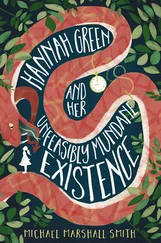Stopping the environmental damage in river catchments starts with the chemical inputs into rivers and the silting from soil erosion. As urban centres developed and the Industrial Revolution got going, rivers were treated as sewers. The Great Stink of London in July and August 1858 is but one example of what was going on in all the great rivers that had the misfortune to flow through towns and cities. The Taff in Wales and the Mersey in northwest England died because of mining and industrial effluent.
Both of these forms of gross pollution have been tackled at source, but sewage still ends up in rivers and industrial pollution remains in some pockets. The river sediments contain lots of heavy metals, and many estuaries – like the Thames – have serious residuals. Dredging to develop the new Thames Gateway container port revealed its scale. Halting the decline means not only stopping further pollution, but also dealing with the continued and long-lasting damage it has caused. We have to deal with not only our mess, but that of previous generations too.
When it comes to sewerage, existing systems continue to overflow in heavy rain through the storm overflows. Stopping the declines means increasing the capacity to contain sewage and prevent overflows. The Thames Tideway aims to do just that, carrying it all to the east of London to the Beckton Sewage Treatment Works. What happens there continues to be a problem, and the estuary remains the final repository. For many sewerage works, it means going down the natural capital route with reed beds and other natural options, and dealing with the sewage at source too. This is both cost-reducing, so our water bills don’t go up, and it creates great habitats for birds, insects, amphibians and aquatic life. The phosphates the water-treatment works pump out into the rivers need to be reduced, partly by stopping them at source from getting into the river in the first place, and partly by better treatment.
The decline of heavy industry and the development of sewerage systems have put a stop to some of the grossest pollution, but river pollution is a moving target. Since the middle of the twentieth century, intensive and agrichemical agriculture has done immense damage. Stopping the further declines here means the creation of significant buffers between the rivers and the arable fields, limiting fertilisers near rivers, putting an end to maize and cereal crops close to rivers to stop the silting, and seriously controlling the application of pesticides and herbicides. It means stopping the treatment of sheep with chemicals near rivers upstream, and it means strict controls of slurry storage to prevent it ending up in the rivers. All are economically good things to do anyway, and this prize will make all our rivers assets rather than liabilities.
Agricultural impacts on the land continue the degradation of the environment more generally, perversely incentivised by the subsidy regime. The decline in insect life is one of the major impacts, and this has contributed to the falling populations of farmland birds. The soils are often in a poor state and are in many areas deteriorating, and this is bad for farming productivity. Hedgerows and field boundaries do not look after themselves. Doing nothing allows the degradation to go on. Stopping the further damage in agriculture requires quite radical surgery. Fortunately, in such heavily subsidised industries the costs of changing practices are low, and especially so when compared with the benefits. Arguably, these improvements can be made and less public money can be spent – much more for less. The prize is a healthier and more vibrant farmed landscape at lower cost, and hence we will be doubly better off as a result.
Because they are harder to plough up, because the weather is less benign to farming, and because the soils are poorer and thinner, the uplands often remain the last bastions of once-widespread wildlife. Once-common lowland birds, like red kites and even house sparrows, have been pushed back to the uplands, back behind the natural constraints that limit intensive farming. Unfortunately, even though upland agriculture is barely, if at all, economic, it has been environmentally damaging. This can and has to stop. Intensive sheep grazing has seriously damaged much of the remaining habitats, stripping the vegetation and exposing peat to the elements. Stopping further damage means reducing sheep intensity, as well as preventing slurry, sheep-dip and other pollutants from entering the rivers. Because the sheep are of very little economic value, the costs of this surgery are negligible. Sheep sale value minus all the various subsidies equals zero, or even less than zero. There is economic gain to be made here.
Stopping the declines along our coasts again comes back in part to agriculture. Most environmental things do. It requires dealing with the run-off of fertilisers, phosphates, pesticides and herbicides, and also dealing with the declines caused by overfishing, by fishing that damages the seabed, and by a wide range of pollution. As with farming, subsidies and especially regulation are an important part of the current system, and the economic value of Britain’s fishing catch, net of supports, is very low. In many areas the obvious answer is simply to ban fishing in exclusion zones. This will mean more fish and a larger sustainable catch than that provided in a business-as-usual scenario. In other areas it needs sustainable fishing plans, which are properly enforced, so that stocks can recover.
In the emerging aquaculture industries, the initial ‘wild west’ of the salmon farms has had serious environmental costs that the producers first denied, and still neither fully pay for nor take sufficient mitigating action against. Indeed, in the west of Scotland this economically inefficient damage is accelerating. Stopping the further damage means sustainable regulations and making the polluters pay. This is all the more important as aquaculture in general is growing and can make a greater contribution to food production over the coming decades, provided the environmental impacts are taken fully into account.
In the urban areas, halting the declines means stopping the further erosion and loss of green spaces, and the chipping-away and degradation of public parks and gardens. It means preventing further loss of urban trees, most notoriously exemplified by Sheffield City Council cutting down thousands of mature trees in the name of utility works. The lack of a full statutory duty to preserve urban green spaces is a serious threat, as councils struggle to pay for social care and other increasing demands on their budgets. Green streets and green parks have very large economic benefits.
What all these measures, which will be elaborated on in subsequent chapters, have in common is that they are all ways of increasing prosperity immediately . They are all sensible economic policies, as well as making a better and greener world. Improving rivers improves our drinking water, and stopping further pollution reduces our water bills since less treatment is needed. Indeed, so great are the economic benefits that some water companies are already paying farmers not to pollute, and to keep the ground covered with crops and grass over winter. Sewage in the river from overflows directly affects people’s welfare. It is not only a health hazard, it deters people from the riverbanks, from exercise and therefore from the health and well-being benefits.
Measures to clean up agricultural pollution would result in seriously large economic gains. Much of the pollution is encouraged and paid for by us as taxpayers. It is heavily subsidised and, as we shall see in chapter 4, reforming agricultural policies to ensure that subsidies are only for the provision of public goods is sound economics. When it comes to the uplands, the subsidy element becomes overwhelming. We pay taxes to subsidise the overgrazing of sheep that are simply not economic. We even subsidise sheep that get live-exported to Europe, with all the animal welfare consequences that such transportation brings. Stopping the damage by reducing grazing intensity would increase the economic value of the uplands, and if the subsidies went towards public goods instead, the economic prosperity of the hill farmers would improve. They are trapped in a system that keeps many of them both poor and marginal.
Читать дальше











